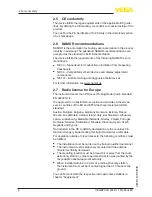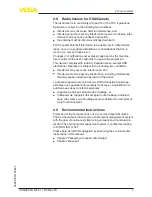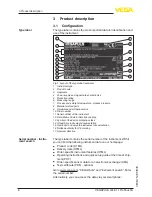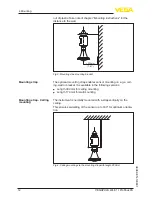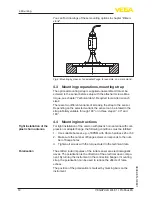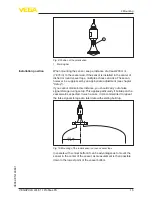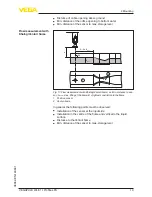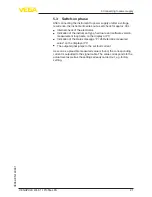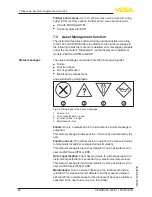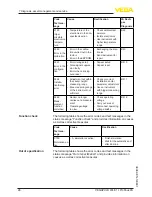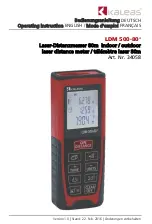
18
4 Mounting
VEGAPULS WL 61 • Profibus PA
38062-EN-140801
If large vessel installations such as struts or supports cause false
echoes, these can be attenuated through supplementary measures.
Small, inclined sheet metal baffles above the installations scatter the
radar signals and prevent direct interfering reflections.
Fig. 15: Cover smooth profiles with deflectors
Through the action of filling, stirring and other processes in the vessel,
compact foams that considerably damp the emitted signals may form
on the product surface.
If foams are causing measurement errors, the biggest possible radar
antennas, the electronics with increased sensitivity or low frequency
radar sensors (C band) should be used.
As an alternative, sensors with guided microwave can be used. These
are unaffected by foam generation and are best suited for such ap-
plications.
The short examples give you introductory information on the flow
measurement. Detailed planning information is available from flume
manufacturers and in special literature.
h
ma
x
d
mi
n
≥ 2 mm x h
ma
x
90°
4
3 ... 4 h
max
≥ 50 mm
90°
2
3
1
Fig. 16: Flow measurement with rectangular flume: d
min.
= min. distance of the
sensor (see chapter "Technical data"); h
max.
= max. filling of the rectangular
flume
1 Overflow orifice (side view)
2 Headwater
3 Tail water
4 Overfall orifice (view from bottom water)
In general, the following points must be observed:
•
Install the sensor on the headwater side
•
Installation in the centre of the flume and vertical to the liquid
surface
•
Distance to the overfall orifice
Foam generation
Flow measurement with
rectangular flume



